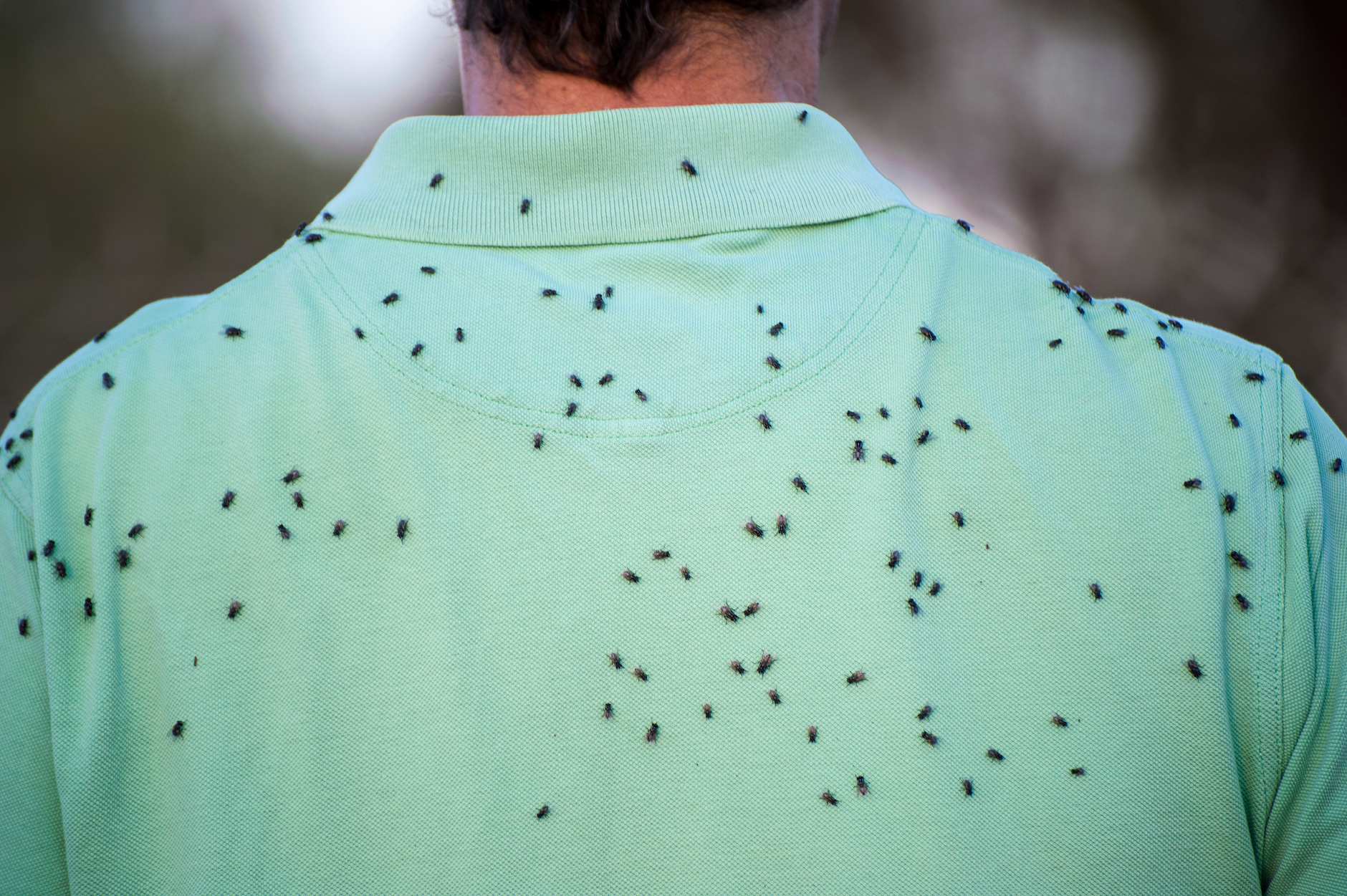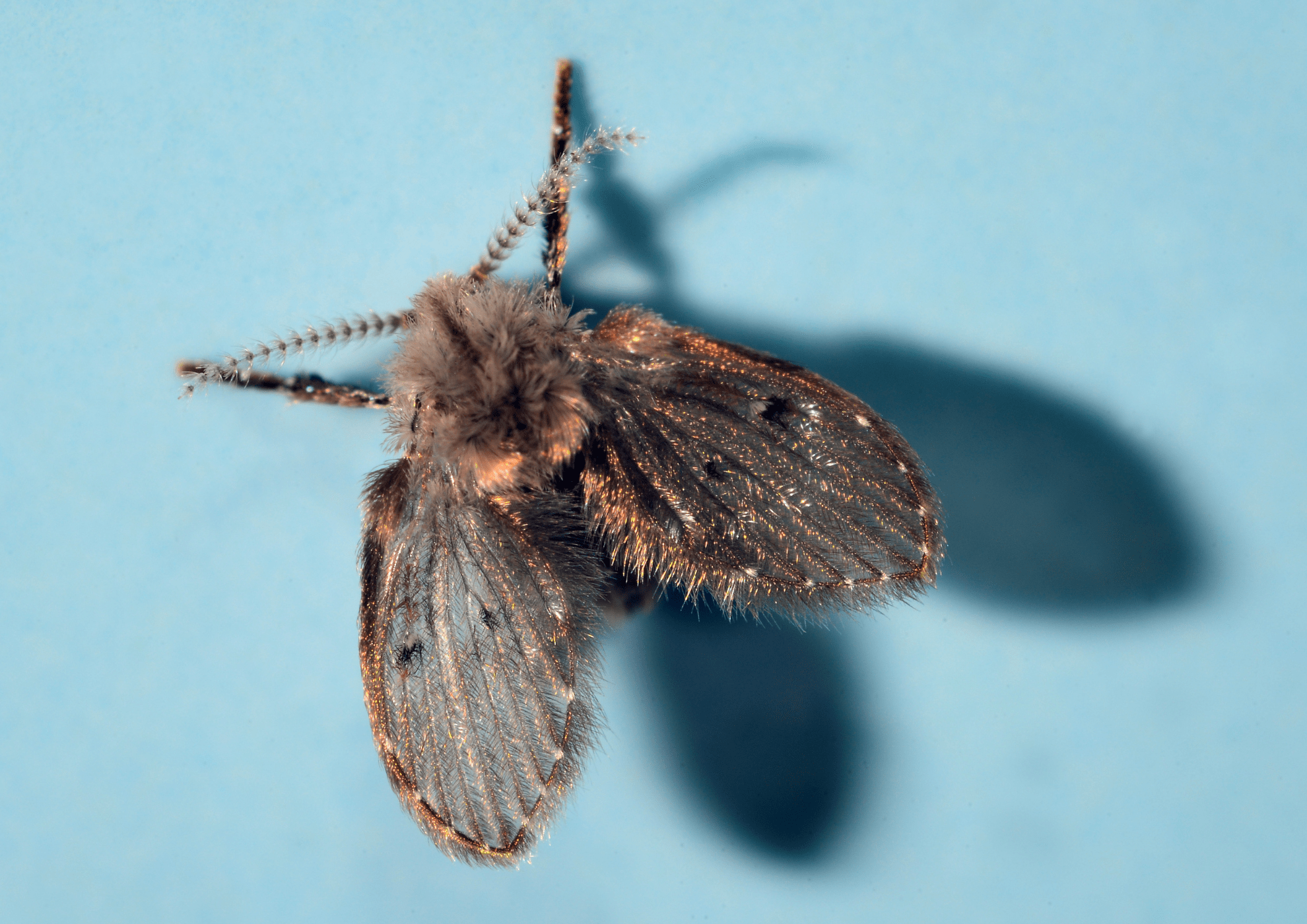Identifying the Source of Brown Flies

Brown flies, commonly seen in bathrooms, can be a nuisance and a potential health concern. These flies are attracted to the damp, humid conditions often found in bathrooms, and they can breed rapidly in the presence of organic matter and food sources. Identifying the specific types of brown flies present and their breeding grounds is crucial for effective control.
Common Types of Brown Flies Found in Bathrooms
Brown flies found in bathrooms are often members of the family Muscidae, which includes house flies, stable flies, and face flies. These flies are typically small, with a body length ranging from 5 to 10 millimeters. They are characterized by their brown or gray color, with some species exhibiting distinct markings on their thorax or abdomen.
Breeding Grounds and Conditions, Brown flies in bathroom
Brown flies thrive in environments with moisture, organic matter, and food sources. Bathrooms, with their damp surfaces, stagnant water, and potential food sources, create ideal breeding grounds for these flies.
- Moisture: Brown flies require moisture for their eggs and larvae to develop. Damp surfaces, leaky pipes, and stagnant water in drains provide the necessary moisture for their breeding.
- Organic Matter: Brown flies feed on decaying organic matter, such as food scraps, animal waste, and even hair and skin cells. Bathrooms often contain organic matter in the form of spilled food, hair, and dust.
- Food Sources: Brown flies are attracted to food sources, particularly those that are sweet or fermenting. Leftover food, spilled drinks, and even toothpaste can attract brown flies.
Characteristics of Common Brown Flies
| Species | Size (mm) | Color | Feeding Habits | Breeding Locations |
|---|---|---|---|---|
| House Fly (Musca domestica) | 6-8 | Gray with black stripes | Omnivorous, feeding on decaying organic matter, food scraps, and feces | Garbage dumps, manure piles, and compost heaps |
| Stable Fly (Stomoxys calcitrans) | 5-7 | Gray with black stripes | Blood-feeding, biting animals and humans | Manure piles, animal bedding, and decaying vegetation |
| Face Fly (Musca autumnalis) | 5-6 | Gray with black stripes | Blood-feeding, biting animals, particularly cattle | Manure piles, animal bedding, and pastures |
Preventing Brown Flies in Bathrooms

Maintaining a clean and sanitary bathroom is crucial to prevent brown flies. Brown flies are attracted to moisture, organic matter, and decaying materials. Therefore, a dirty bathroom provides an ideal breeding ground for these pesky insects.
Cleaning and Disinfecting Bathroom Areas
A thorough cleaning and disinfection of bathroom areas can effectively eliminate potential breeding grounds for brown flies. Here’s a step-by-step guide:
- Clean the toilet bowl: Regularly scrub the toilet bowl with a toilet bowl cleaner, paying special attention to the rim and under the edge. This removes any organic matter that could attract brown flies.
- Clean the sink and bathtub/shower: Use a disinfectant cleaner to clean the sink, bathtub, or shower. This removes soap scum, hair, and other debris that can attract flies.
- Wipe down surfaces: Disinfect all surfaces, including the countertops, mirrors, and walls, to eliminate any potential breeding sites. Pay particular attention to areas around the sink and toilet.
- Clean the floor: Regularly sweep and mop the bathroom floor with a disinfectant cleaner. This removes any spilled liquids, food particles, or other debris that could attract flies.
- Empty the trash: Empty the bathroom trash can regularly to prevent the buildup of organic matter that can attract flies.
Bathroom Maintenance Checklist
Regular bathroom maintenance is essential for preventing brown flies. Here’s a checklist to ensure your bathroom remains clean and fly-free:
- Clean the toilet bowl weekly: This removes any organic matter that could attract flies.
- Clean the sink and bathtub/shower weekly: Disinfecting these areas eliminates soap scum, hair, and other debris that can attract flies.
- Wipe down surfaces weekly: Disinfecting countertops, mirrors, and walls eliminates potential breeding sites.
- Clean the floor weekly: Sweeping and mopping the bathroom floor with a disinfectant cleaner removes spilled liquids, food particles, and other debris that could attract flies.
- Empty the trash daily: This prevents the buildup of organic matter that can attract flies.
- Check for leaks: Regularly inspect the bathroom for any leaks, as water can attract flies. Repair any leaks promptly.
- Ventilate the bathroom: Ensure proper ventilation in the bathroom by using a fan or opening a window. This helps to reduce moisture and prevent the growth of mold, which can attract flies.
- Store toiletries properly: Store toiletries, such as toothpaste and soap, in sealed containers to prevent flies from being attracted to the scent.
Controlling Brown Flies in Bathrooms
Once you’ve identified the source of the brown flies and taken steps to prevent their entry, you’ll need to address the existing infestation. Several methods can help control brown flies in your bathroom, ranging from simple traps to chemical insecticides.
Trapping Brown Flies
Trapping brown flies is a common and often effective way to reduce their numbers. These traps work by attracting flies to a lure and then trapping them.
- Flypaper: Flypaper is a classic method for catching flies. It’s sticky and coated with a substance that attracts flies. When flies land on the paper, they get stuck.
- Fly Traps: Fly traps are commercially available devices that attract flies with a lure, such as food or a light source, and then trap them inside. Some traps use sticky surfaces, while others use a mechanism that suffocates or electrocutes the flies.
- Fruit Fly Traps: These traps are specifically designed to catch fruit flies, which are often attracted to overripe fruit. They typically use a vinegar-based solution to lure the flies.
Traps are generally safe for use around pets and children, but it’s important to follow the manufacturer’s instructions.
Using Insecticides
Insecticides can be effective in killing brown flies, but they should be used with caution, as they can also be harmful to humans and pets.
- Aerosol Sprays: Aerosol sprays are a quick and easy way to kill flies, but they can also leave behind a chemical residue. It’s important to ventilate the area well after using an aerosol spray.
- Fly Swatter: A fly swatter is a simple and effective way to kill flies, but it can be messy.
- Electric Bug Zappers: Electric bug zappers use a high-voltage electric grid to kill flies that come into contact with it. They can be effective but can also pose a risk to pets and children.
When using insecticides, always follow the manufacturer’s instructions carefully and wear protective clothing, such as gloves and a mask.
Natural Remedies
Several natural remedies can help deter brown flies, including:
- Essential Oils: Certain essential oils, such as peppermint, lavender, and eucalyptus, can repel flies. You can diffuse these oils in your bathroom or add a few drops to a spray bottle and mist the air.
- Vinegar Traps: Vinegar traps can be effective in catching fruit flies. Simply fill a small container with apple cider vinegar and a few drops of dish soap. The flies will be attracted to the vinegar and drown in the soapy water.
- Basil: Basil is a natural fly repellent. You can grow basil plants in your bathroom or place a few sprigs of basil in a vase.
Natural remedies are generally safe for use around pets and children, but it’s important to avoid using essential oils on pets.
Sealing Cracks and Crevices
One of the most effective ways to prevent brown flies from entering your bathroom is to seal any cracks and crevices. Flies can enter through even the smallest openings.
- Caulk: Caulk can be used to seal cracks and gaps around windows, doors, and plumbing fixtures.
- Weatherstripping: Weatherstripping can be used to seal gaps around doors and windows.
- Screen Mesh: Screen mesh can be used to cover vents and other openings.
By sealing up these openings, you can make it more difficult for flies to enter your bathroom.
